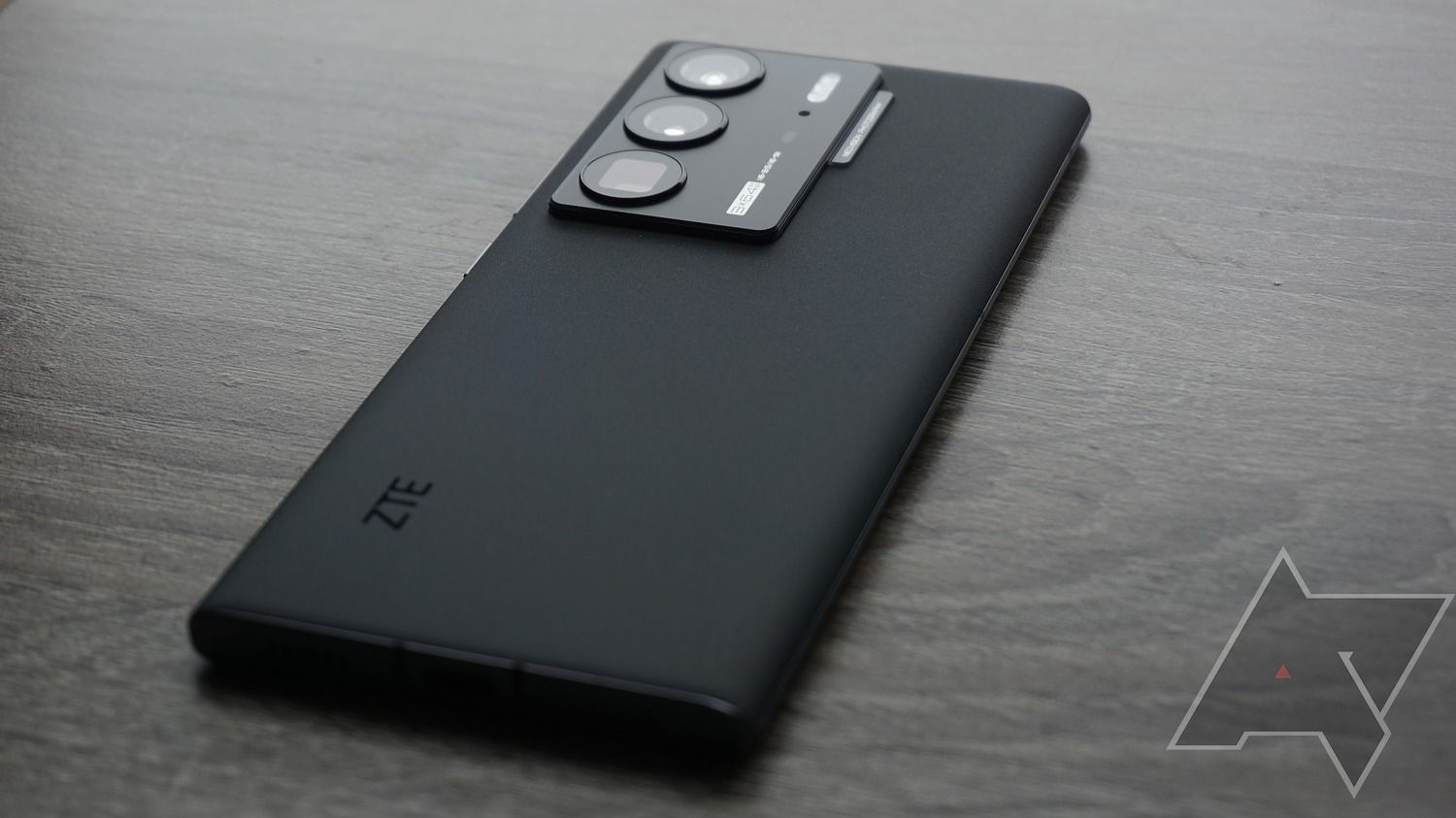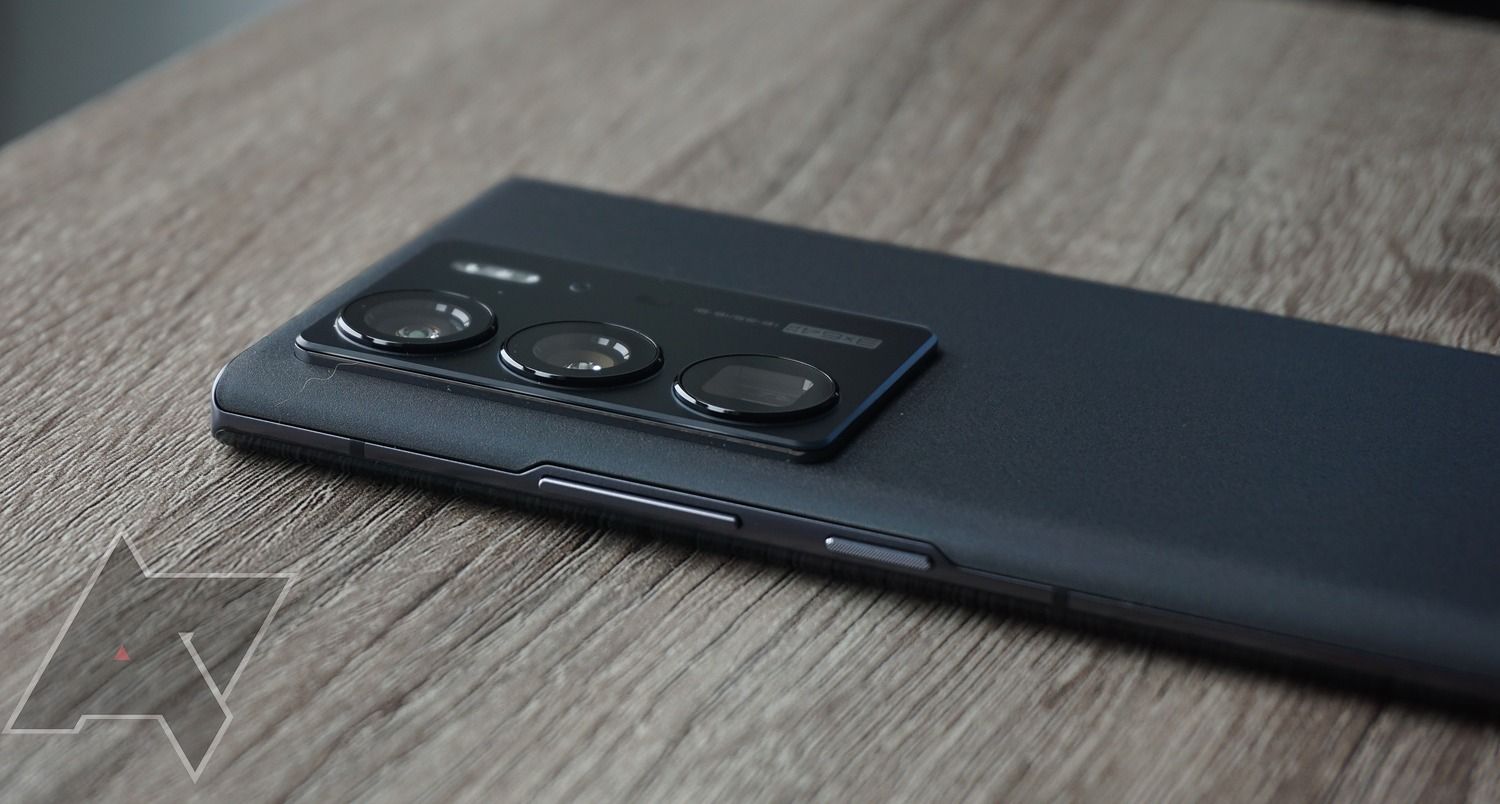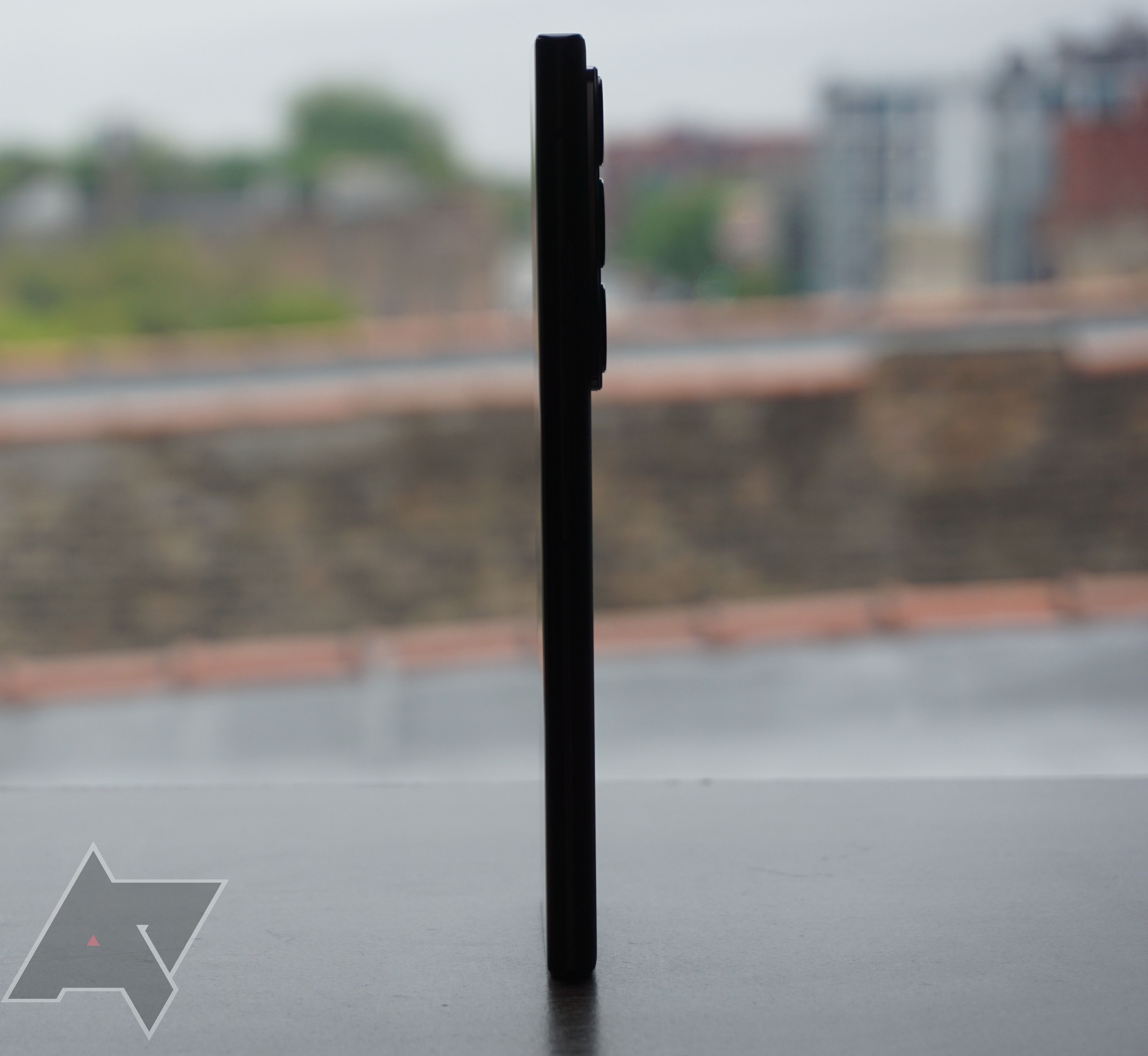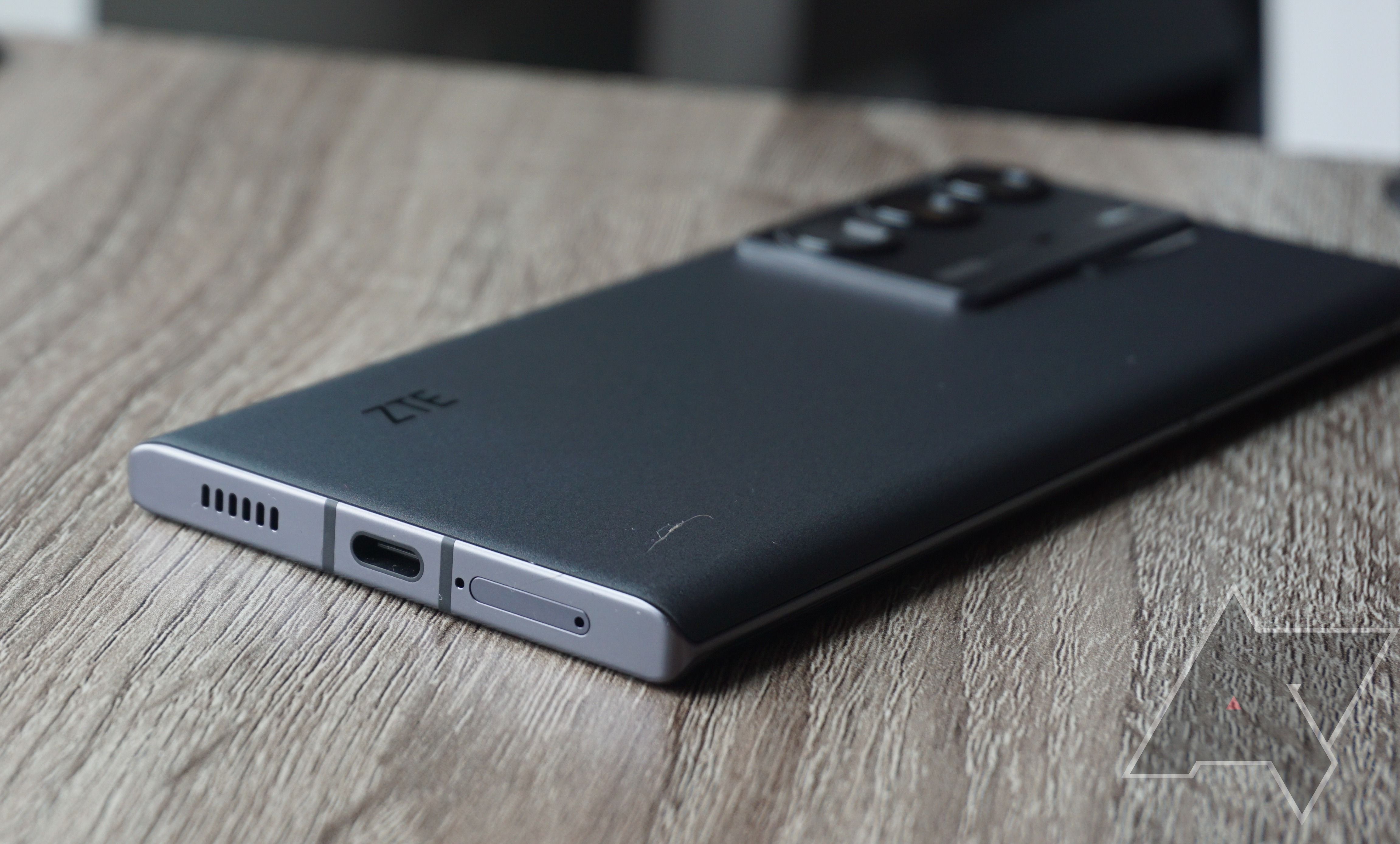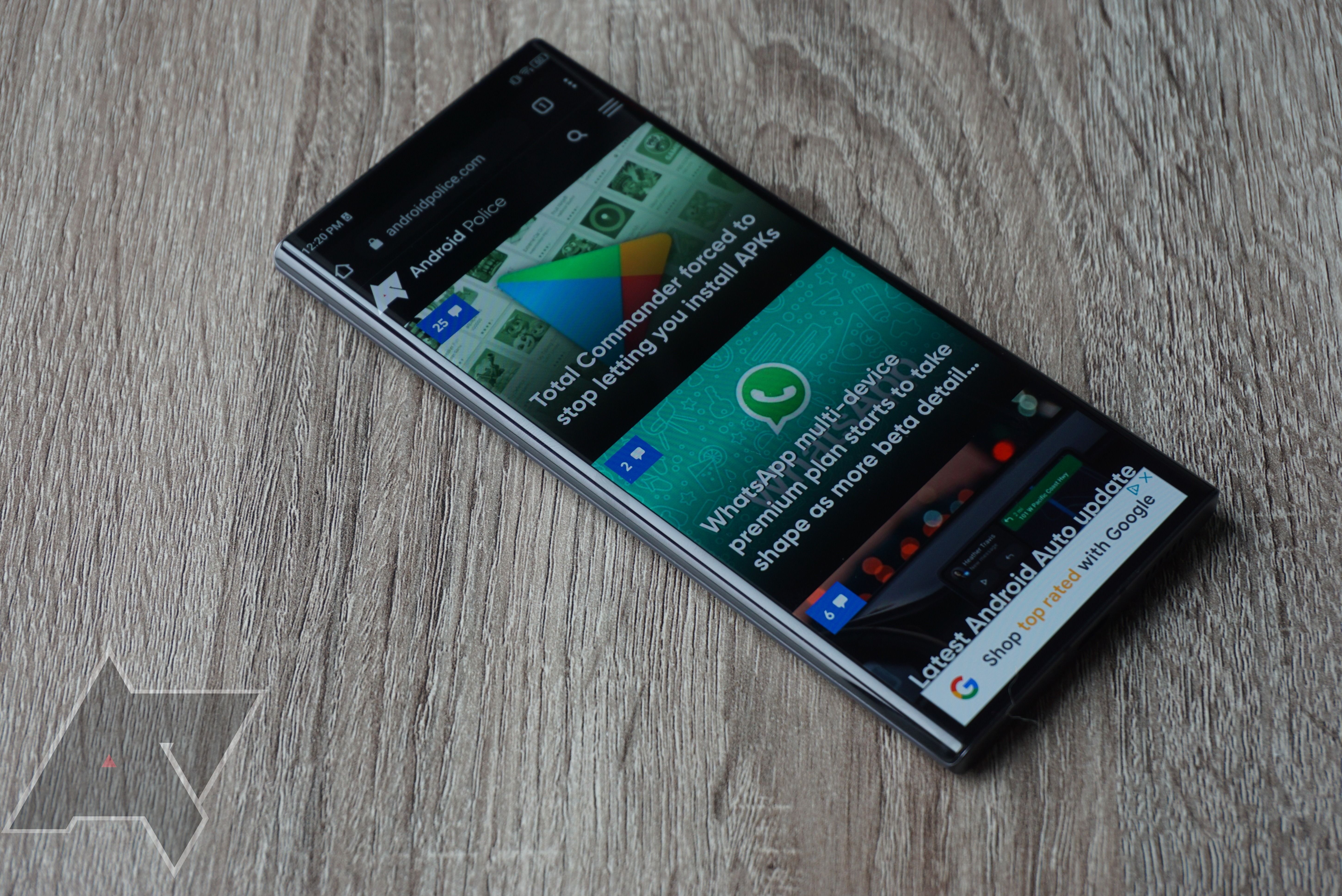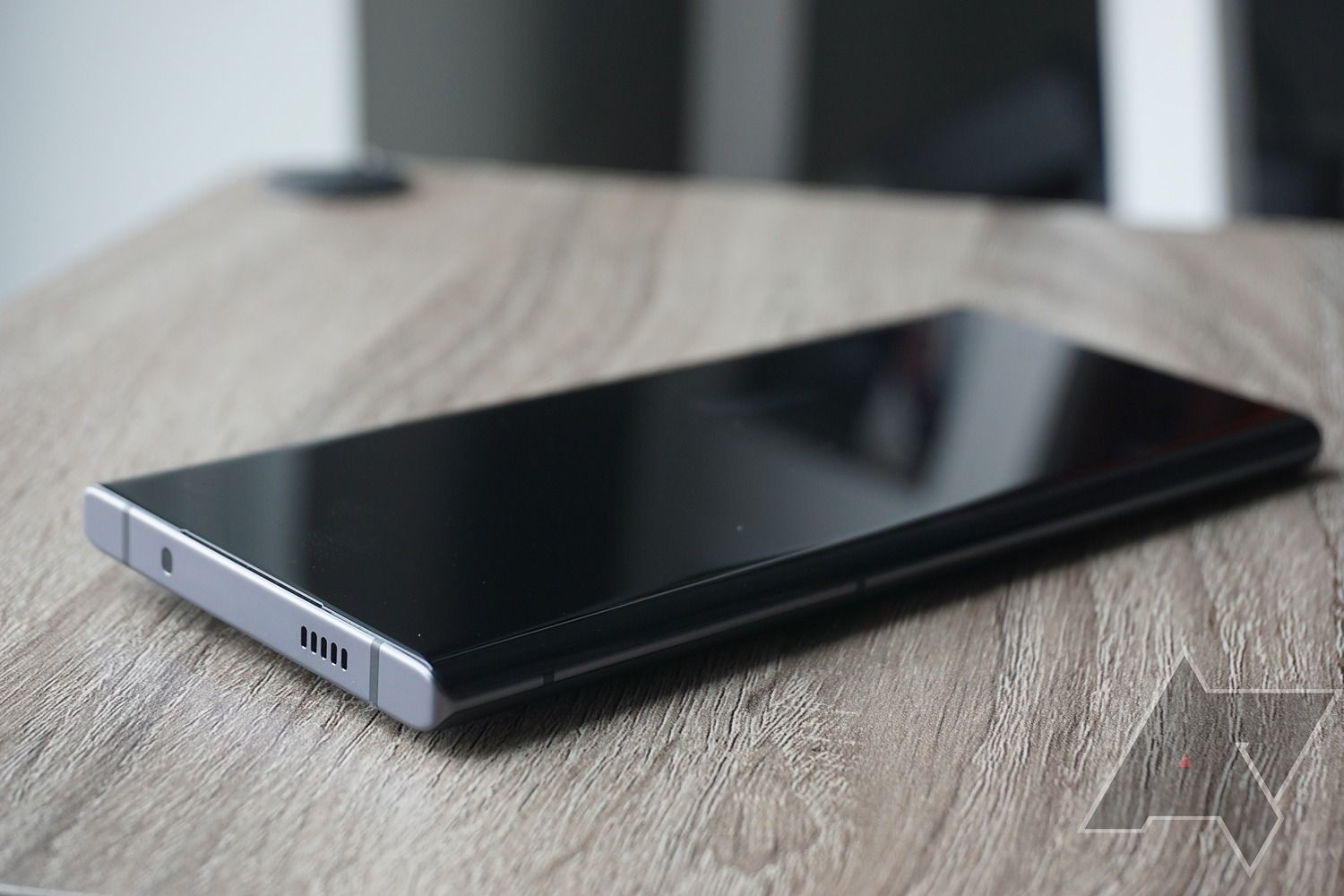When you see the word “Ultra” in the name of a smartphone, your first inclination might be to worry about your wallet. That is certainly the case with some of the best Samsung phones, where this buzzword typically means you’re going to be spending upwards of $1,000 for a high-end device. However, the ZTE Axon 40 Ultra bucks that trend by offering a wide range of advanced features – like an under-display fingerprint sensor, super-speedy charging, and a robust camera array – all at the almost-reasonable price of $799.
Yes, you’ll have to endure the Android-based operating system MyOS and the smartphone world still hasn’t completely figured out how to make an under-display selfie camera that actually works well, but ZTE is closer than most. There’s certainly something to be said for a comparatively affordable Ultra smartphone with these kinds of features. All that to say, you should definitely give the ZTE Axon 40 Ultra a fair shake now that it's available in the US.
ZTE Axon 40 Ultra
As a smartphone on the lower end of the high-tier pricing bracket, the ZTE Axon 40 Ultra delights with a lot of very impressive features, like the robust camera array and the stunning display, but drops the ball on some basics like the selfie camera and the operating system.
- SoC: Qualcomm SM8450 Snapdragon 8 Gen 1
- Display: 6.8-inch OLED, 2480 x 1116p, 120 Hz
- RAM: 8/12/16 GB
- Storage: 256GB/512GB/1TB
- Battery: 5,000 mAh
- Ports: USB Type-C
- Operating System: MyOS (based on Android 12)
- Front camera: 16 MP f/2.0
- Rear camera: 64 MP f/1.6 Standard, 64 MP f/3.5 Periscope, 64 MP f/2.4 Ultrawide
- Others: Stereo speakers, in-display fingerprint reader
- Dimensions: 6.43 x 2.89 x 0.33 inches
- Colors: Black, Gold, Silver
- Weight: 7.2 oz
- Charge speed: 65W
- Price: $799
- Excellent display quality and smoothness
- Sturdy feel
- Comprehensive customization
- Extremely fast USB-PD charging
- Frustrating Android skin
- Terrible under-display selfie camera
- Mediocre speaker quality
Price, availability, and network compatibility
Starting at $799, the ZTE Axon 40 Ultra is one of the more affordable high-end phones out there. That price is for the 8G RAM + 128GB storage device, with the 12GB RAM + 256GB storage device costing you an extra $100, coming in at $899, which is still a great deal for an Ultra phone. Both iterations of the device are available in the US, as well as in 46 other countries, including Canada, Australia, and the United Kingdom. Most notably missing from the list is India, which will reportedly be getting access to the device at some point in the future.
As far as network compatibility goes, the ZTE Axon 40 Ultra is compatible with 5G networks, but your coverage might be a bit spotty. ZTE doesn't offer compatibility with as many frequencies as other smartphone providers, so your ability to connect might be hindered depending on where you are. For example, the phone does not support millimeter-wave frequencies, which are important for Verizon, and lacks support for T-Mobile's extended range band n71.
Design, hardware, what’s in the box
Right out of the box, the ZTE Axon 40 Ultra feels great. In earnest, this may be my favorite aspect of the smartphone, even after a few months of use. The sleek, matte glass back feels smooth to the touch, and the curved screen makes for a very comfortable experience in hand despite the large size. More importantly, the wrap-around display doesn’t create a razor’s edge situation on the side of the device, like the Axon 30 Ultra. The glass back feels a lot like Samsung’s phones. It’s durable, picking up no scratches after a jostle in my pocket with some keys. I’m still not in love with the slim, plastic buttons, as I mentioned in my review of the Axon 30 5G, because they make it feel cheaper than it is, but on the wrap-around display and the glass matte finish, they feel a bit more natural than on the Axon 30 5G's plastic build.
As is often the case with Ultra phones, the Axon 40 Ultra is big. Even without a case, the smartphone is peeking out of the top of your skinny jean pockets. Plus, the enormous camera bump can catch when you try to cram it in. Even after a few months of use, the issue still persists; if you wear pants/shorts that are even a little bit tight, you will not get used to it without a case. For comparison, Axon is within a few millimeters of the Samsung S22 Ultra, although the Axon 40 Ultra is slightly — and we really mean slightly — thinner. And with the large camera array protruding from the top, unlike the Samsung S22 Ultra, we’d say it’s pretty much a wash.
This might not be a deal-breaker, but the speakers aren’t up to snuff for a high-end phone like this — Samsung’s latest flagships sound better. The sound quality is a bit uneven, particularly when watching in landscape view, which is likely due to the asymmetrical placement on the top and bottom of the device. Still, I’ve definitely heard worse (looking at you, Moto G Stylus 5G). The speakers do get loud, though, so if you’re going for a group listening experience without too much focus on quality, the Axon 40 Ultra will be able to oblige.
To unlock the device, you have the option between standard screen unlock, or biometric access through facial recognition or the under-display fingerprint scanner. The facial recognition worked well enough, although there was the occasional delay, which felt like a problem with the under-display camera more than anything. The optical under-display fingerprint scanner, on the other hand, was a dream, working quickly and effectively every time with all five fingers it allows you to store. The Samsung S22, by comparison, has an ultrasound fingerprint scanner under the display.
ZTE has been surprisingly generous with bundled accessories, which is not always the case with even the best Android phones. You’ll get the phone, a USB-C cable, and a charging brick, which is already more than Samsung or Google will do. You’ll also get a wired pair of 3.5mm headphones, and a USB-C to headphone jack dongle, so you can actually use them.
Display
Truly loved the AMOLED display experience on the ZTE Axon 40 Ultra. For one, the size is great for watching any kind of content, again matching the Samsung S22 Ultra at 6.8 inches. However, it’s a lower resolution at 1116 x 2480 vs 1440 x 3088 — I can’t say I really noticed, though. The tiny bezels at the top and bottom of the device are barely perceptible, giving the Axon an impressive 93% screen-to-body ratio (a bit higher than the S22 Ultra). Even better, the 144Hz refresh rate was noticeably better than other smartphones I’ve used, particularly when it came to scrolling through social media and playing high frame rate games. In the right (or wrong) light, though, you can see the under-display camera, which make it look worse than if they simply embraced the hole-punch. It's certainly better than a notch, but let's be honest, anything is better than a notch.
The ZTE Axon 40 Ultra also boasts an impressive brightness range, which improves the overall experience in bright spots and dark ones. With a peak brightness of 1500 nits, the device was easily viewable in bright sunlight, even when watching dark videos (I’m currently rewatching Game of Thrones, so it was really put to the test with all the murky atmospheric shots). It’s not quite as bright as Samsung’s latest OLEDs, but it does best the Pixel 6. Conversely, in dark locations, the device wasn’t so bright that it ruins your sleep cycle for the next week.
The cool factor of the waterfall display cannot be overstated either. Sure, once you throw a case on it you won’t be able to enjoy it nearly as much, but without a case, this screen looks amazing and doesn’t feel too big. It was the first thing anyone said to me once I took out the device for pictures at a wedding and generally adds to the viewing experience.
Software and performance
It’s hard to argue that the ZTE Axon 40 Ultra isn’t a powerhouse in the hardware department. Unfortunately, the same cannot be said for the software. This device employs the MyOS Android skin on top of Android 12, a confusing and inconsistent interface that seems to purposefully do away with some of Android's more convenient and better-looking aspects.
For starters, the drop-down menu shade is infuriating. The notifications feel jumbled and poorly organized, and the standard layout is just wrong. The brightness bar sits underneath the quick settings, which is abject anarchy as far as design is concerned. The excessive use of logos and icons cluttered up the settings screen way more than necessary, and the confusing multitasking functionality had me sure that something was broken. But no, this is how it's supposed to work. This doesn't get better over time either. Throughout the last few months, I frequently struggled to get used to the slightly different interface and couldn't muster even the slightest enthusiasm for the chaos.
One place where the software shines, however, is customizability. The ZTE Axon 40 Ultra walks you through all the differences you can make on your device, from the animation of the fingerprint unlock to the color scheme of your lock screen. Even better, the personalization screen in settings is well-designed and uncomplicated, providing helpful options all in one place — animations, icon packs, colors all in one place. Sadly, there's no Material You theming here, but that may come in a software update.
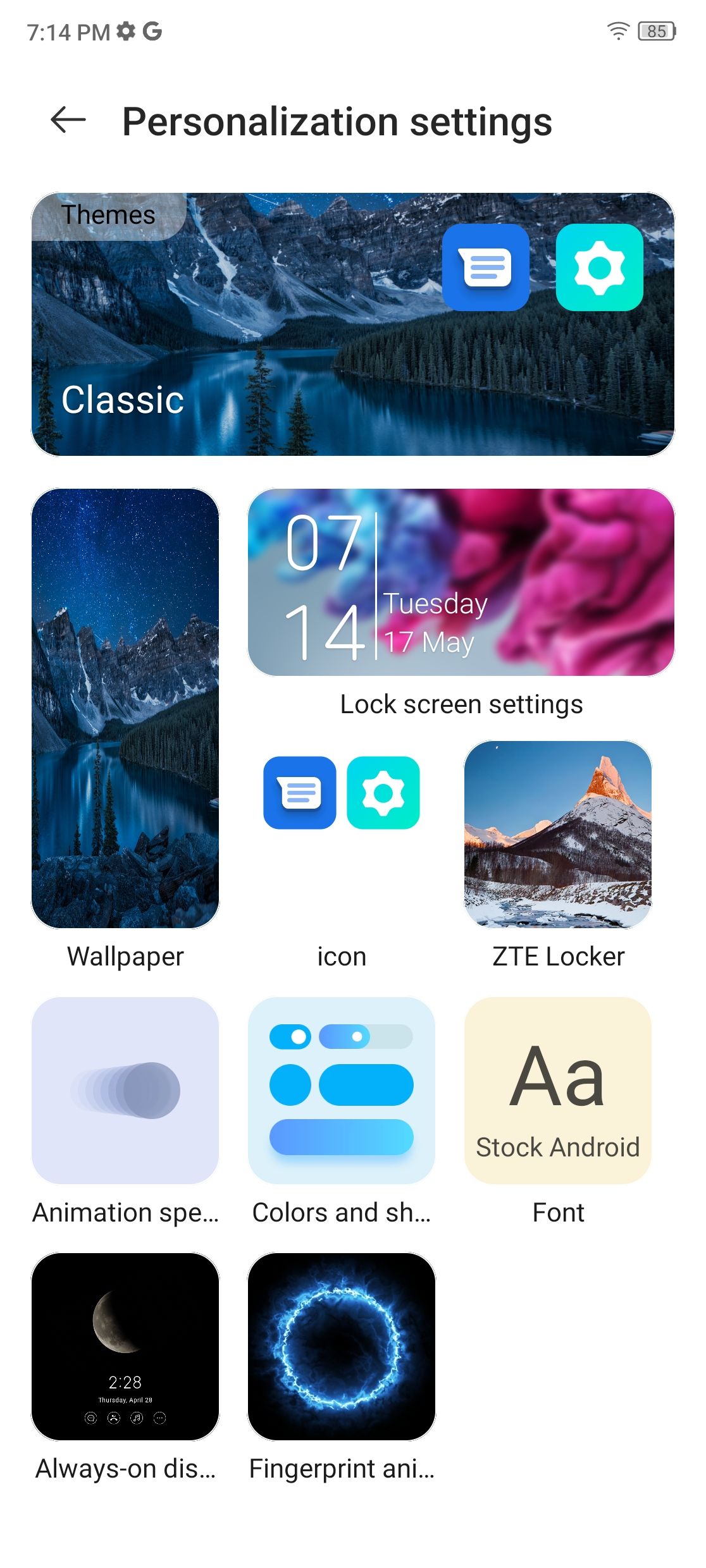
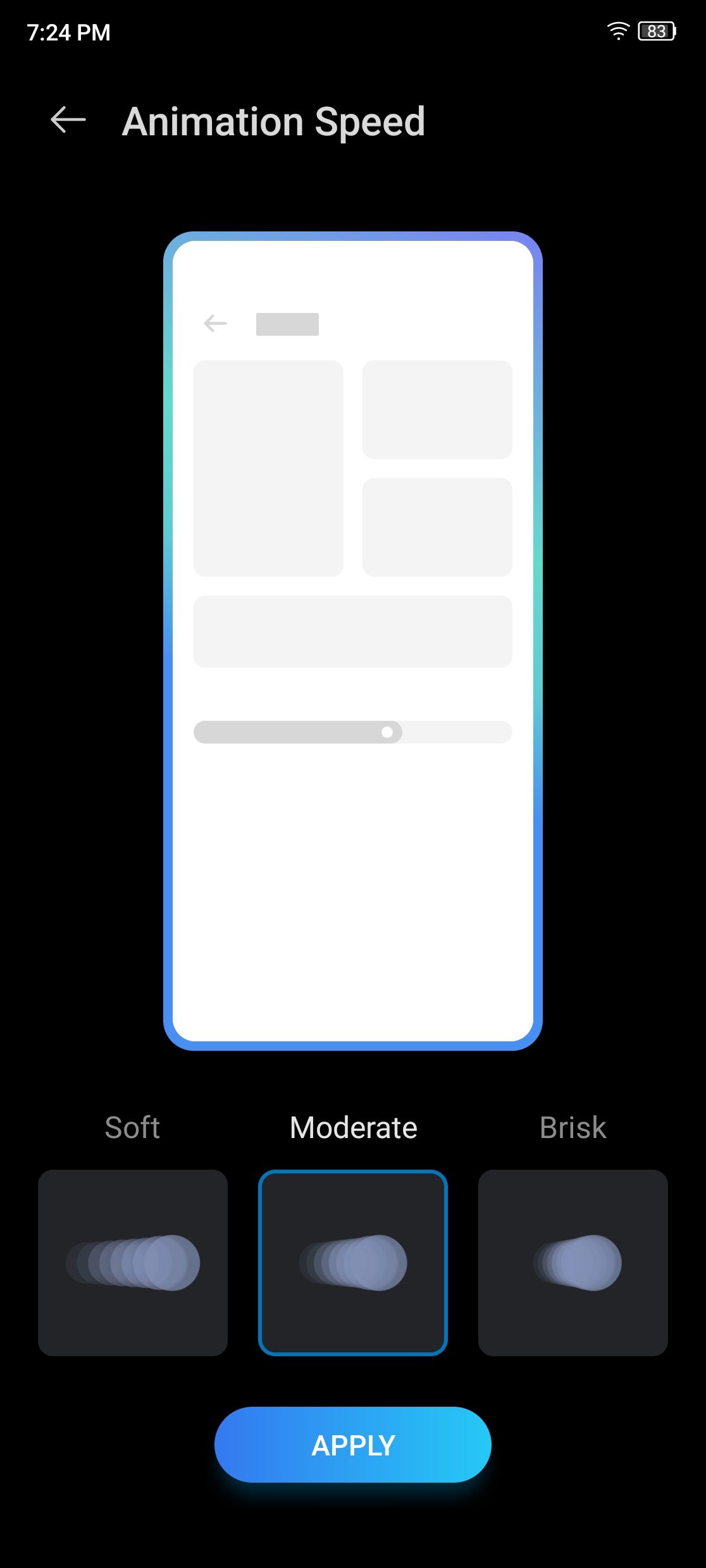
The ZTE Axon 40 Ultra is powered by the Qualcomm Snapdragon 8 Gen 1, which has become one of the standard options for high-end smartphones in 2022. It handled everything with aplomb, hitting no lags or glitches while streaming or gaming, even on the infamously dodgy HBO Max platform.
Battery life
As has become common for high-end smartphones, the ZTE Axon 40 is rocking a 5,000 mAh battery, which makes it equal to the Pixel 6 Pro and, again, the Samsung S22 Ultra. It’s got enough battery life to make you forget about your charger for at least the majority of the day. Even when scrolling TikTok for hours or getting a few sessions of Subway Surfers in, the battery held strong and didn’t drop unexpectedly. It’ll easily last all day, only reaching the danger zone early the next morning, and that’s only after heavy usage. Longevity has been impressive too, showing no signs of noticeable deterioration over the last few months.
While the Axon 40 Ultra is comparable to the Samsung S22 Ultra and the Pixel 6 Pro on battery size, it does stand above the rest in one important aspect: charging speed. The device offers 65W charging, which dwarfs the Pixel 6 Pro (30W) and the S22 Ultra (45W), making it one of the fastest charging devices on the market today. It also eschews the rare and proprietary standards many devices used to fast charge, for example OnePlus/Oppo VOOC. Any USB-PD charger of sufficiently high wattage should be able to hit the maximum 65W speeds. A few minutes on the charger will get you most of a day of juice.
Even if you don’t have one of these super-fast chargers, the Axon 40 Ultra still performs admirably when it comes to charging. Even with a dinky 18W Google charger, the device went from 1% to 100% in 70 minutes while turned on. Suffice it to say, we’re getting pretty close to a world in which smartphone charging isn’t the brutal hassle it’s been for years, and the Axon 40 Ultra is a big step in the right direction.
Cameras
ZTE wrote a big check on this one when it comes to cameras, as it did with the Axon 30 Ultra: three 64MP rear-facing cameras. It’s an admittedly hefty array, but if you like to zoom, it might be a good fit. The detail in the primary 35mm pictures was discernible after the first snap, and became more and more obvious the more I used it. This is also a great focal length to use while out and about. Without any editing, the colors were bright, the image was crisp, and they just looked good without a filter in sight. Even shots with the ultrawide don’t lose any luster, and it gets in plenty with the 0.4x zoom (16mm).
Overall, the 64MP cameras impressed more than expected, which you wouldn’t expect without the AI power behind the array on the Pixel 6 Pro, for example. While the telephoto lens makes for great shots if there's good light, I was largely unimpressed with the watercolor nature of anything beyond the optical zoom (91mm, 3.5x). Even at 10x, the picture begins to get pretty blurry, and each increment up to the max of 40x gets worse and can’t compete with Google’s or Samsung’s digital zoom. Suffice it to say, this camera array is not made for zoom like the Samsung S22 Ultra, but that’s more of a novelty than a necessity anyway.
You might also notice the ZTE watermark in the photos. That's on by default, which is yet another example of bad software decisions from ZTE. I left it on for the lulz so you can see how very silly it makes photos look.
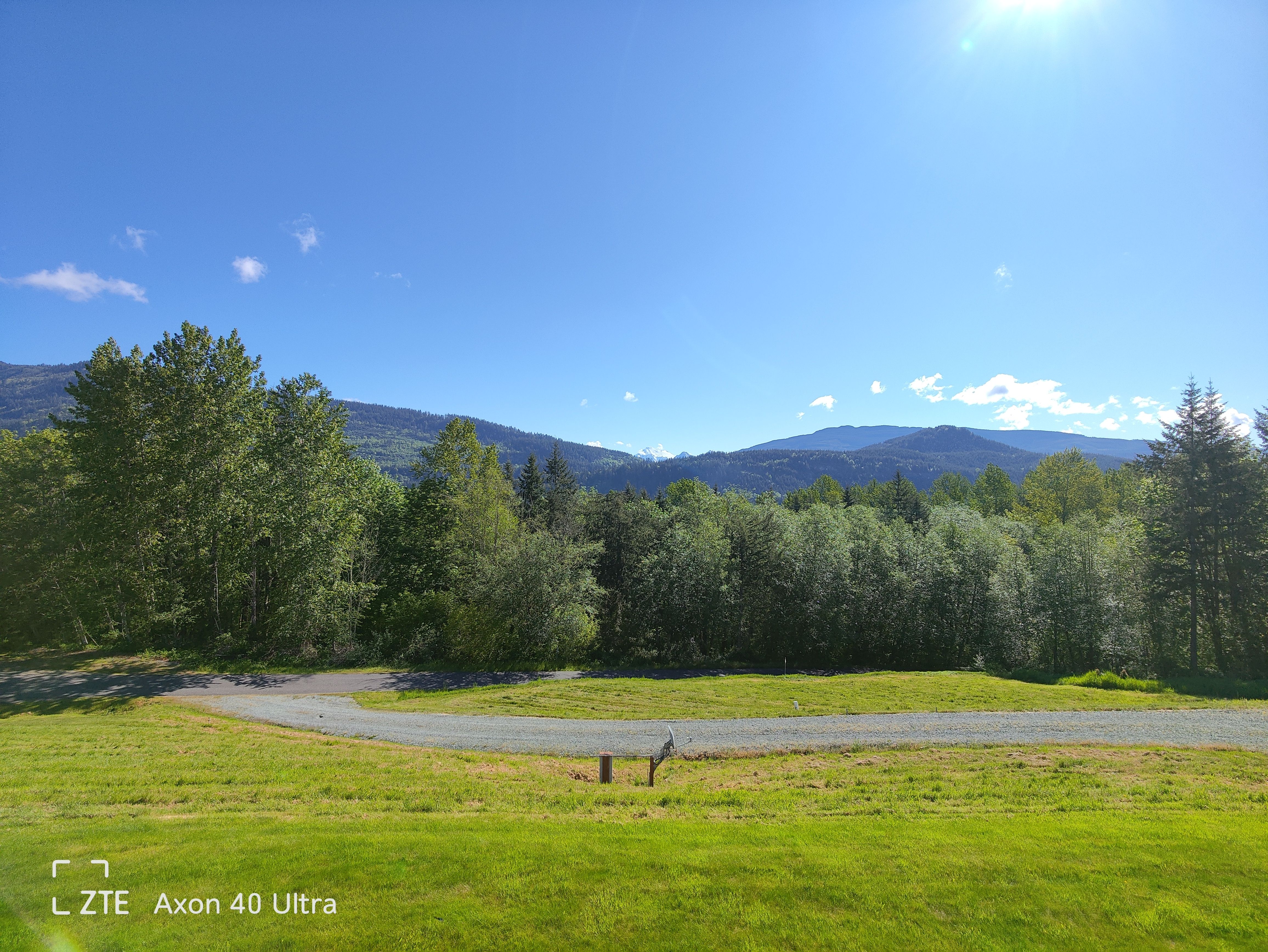
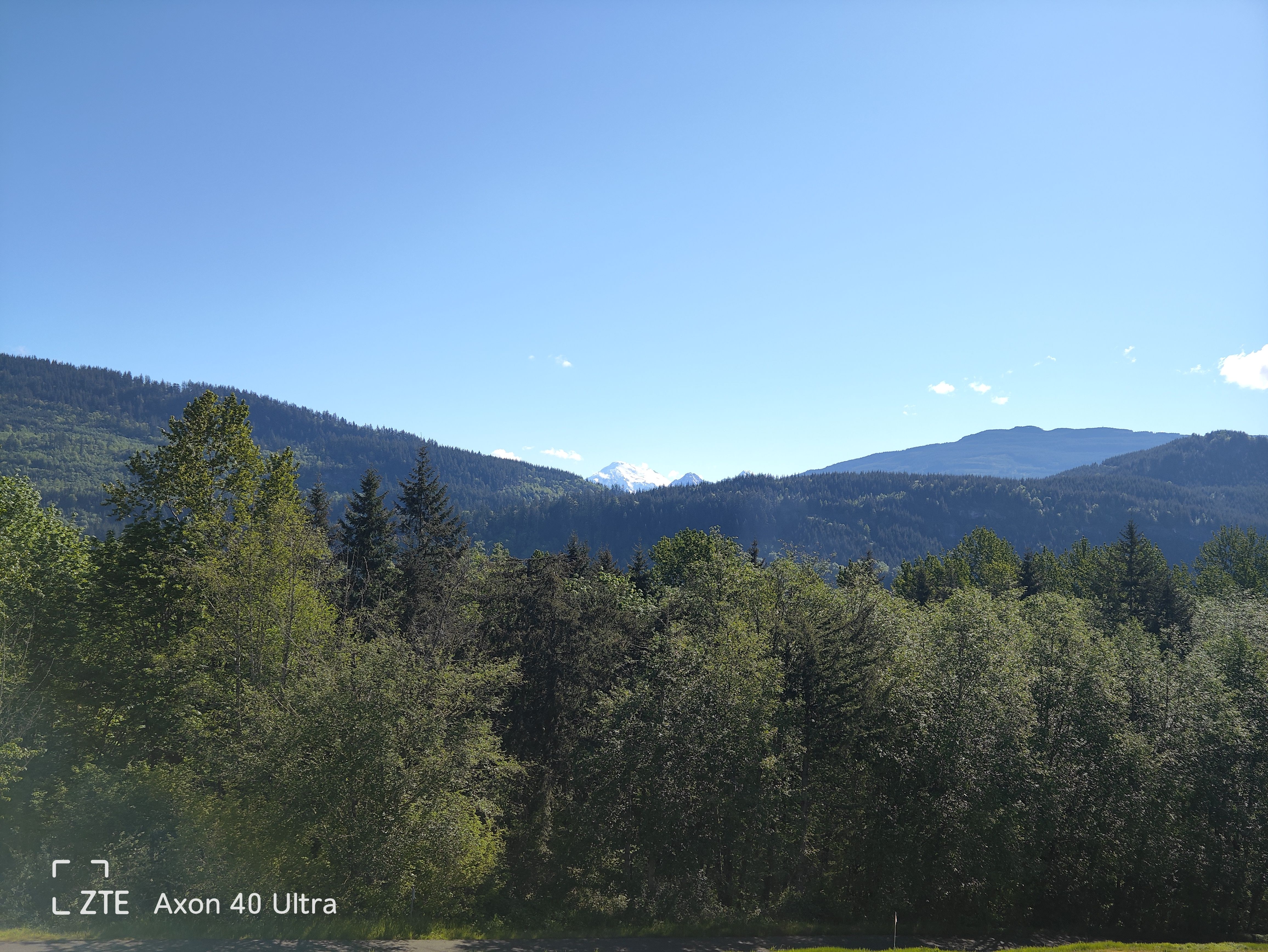
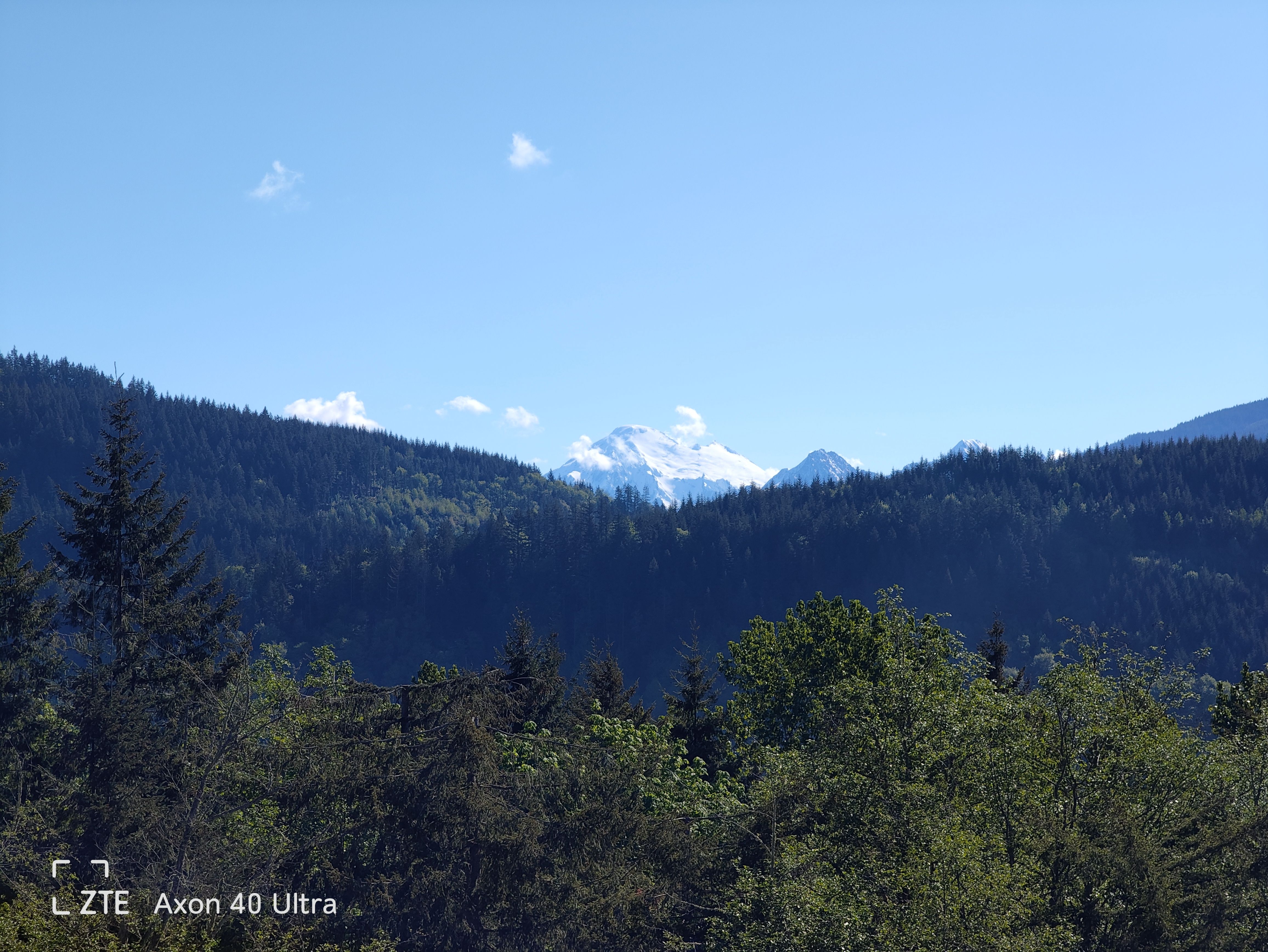




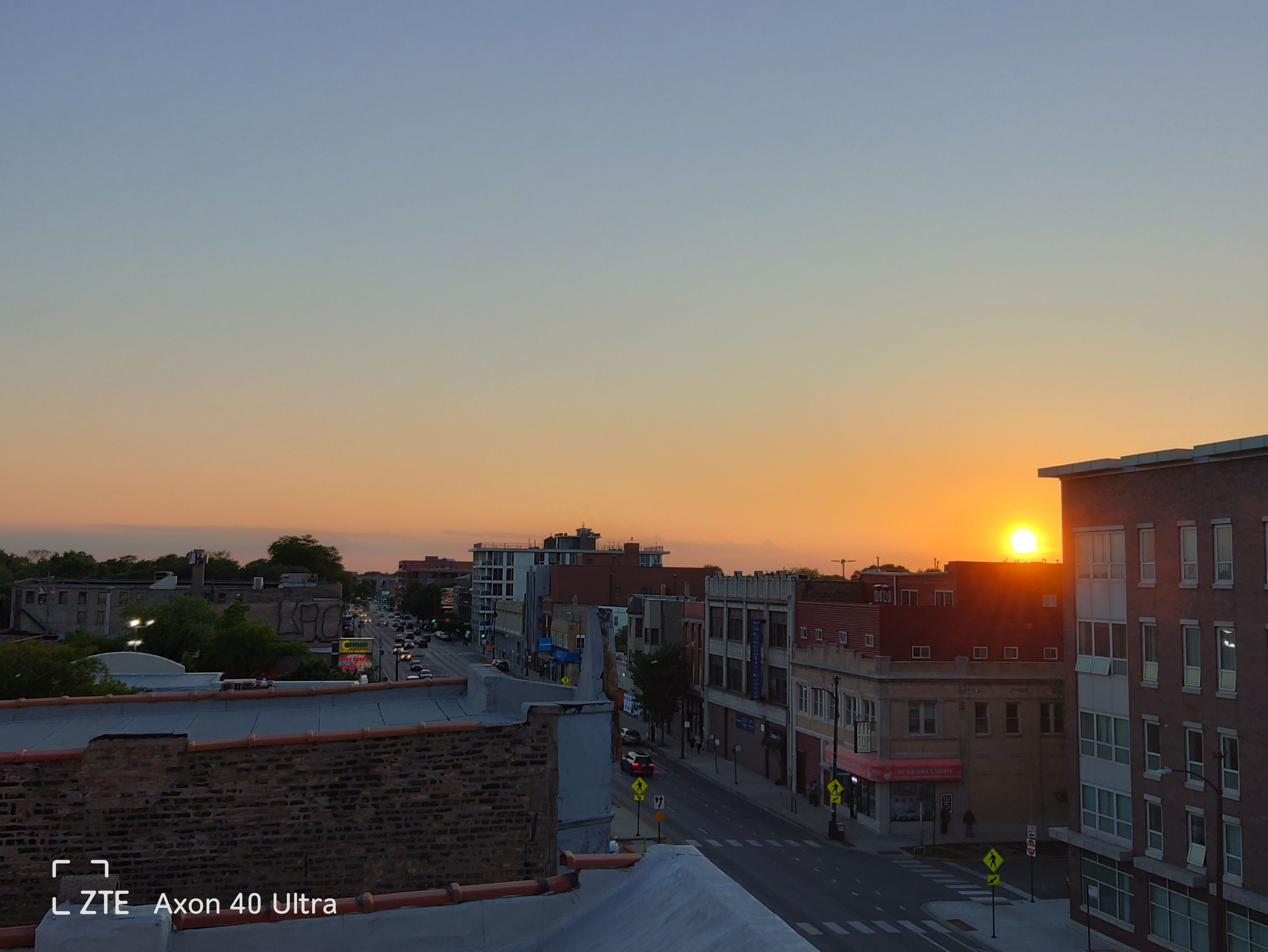
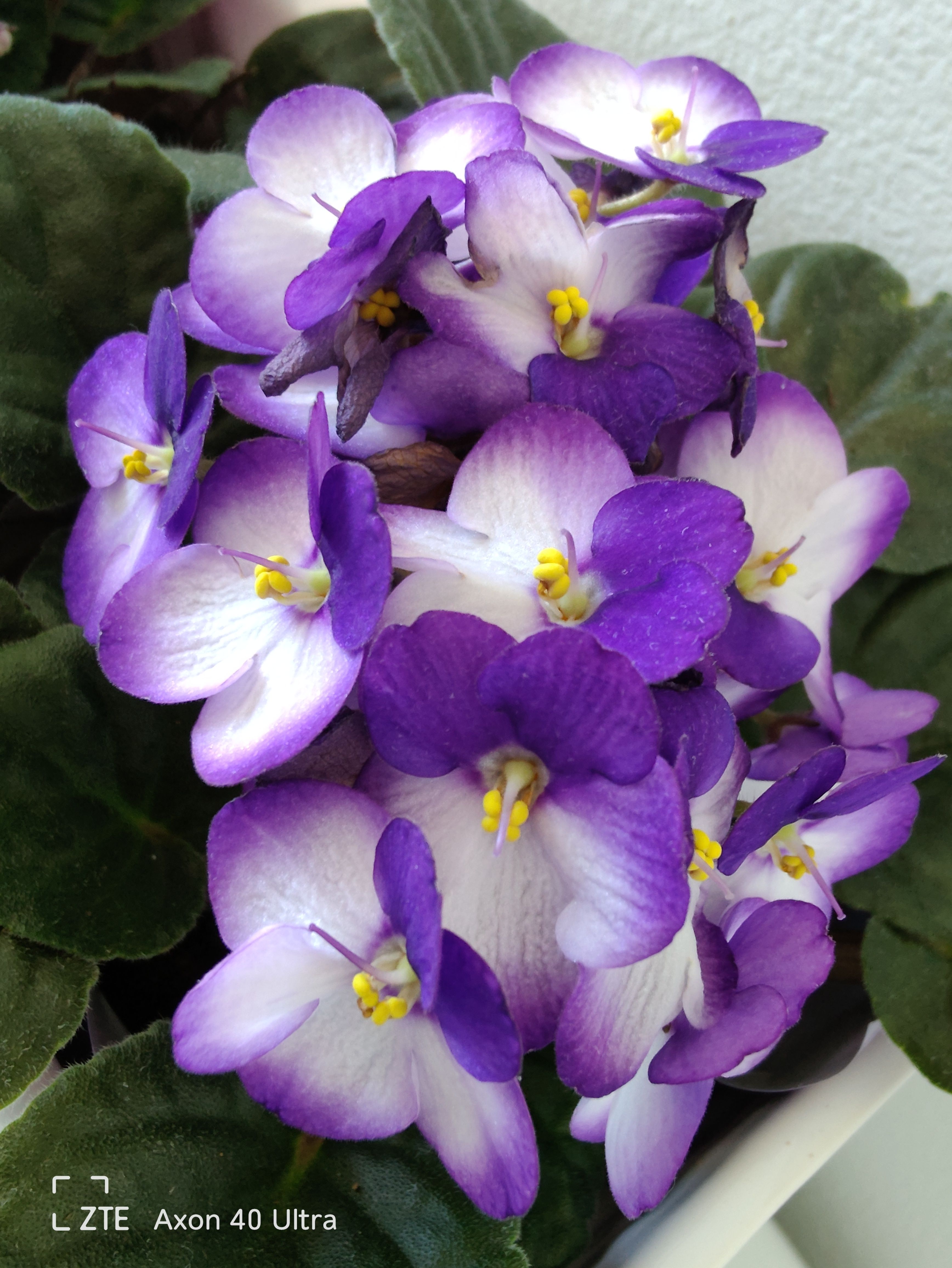




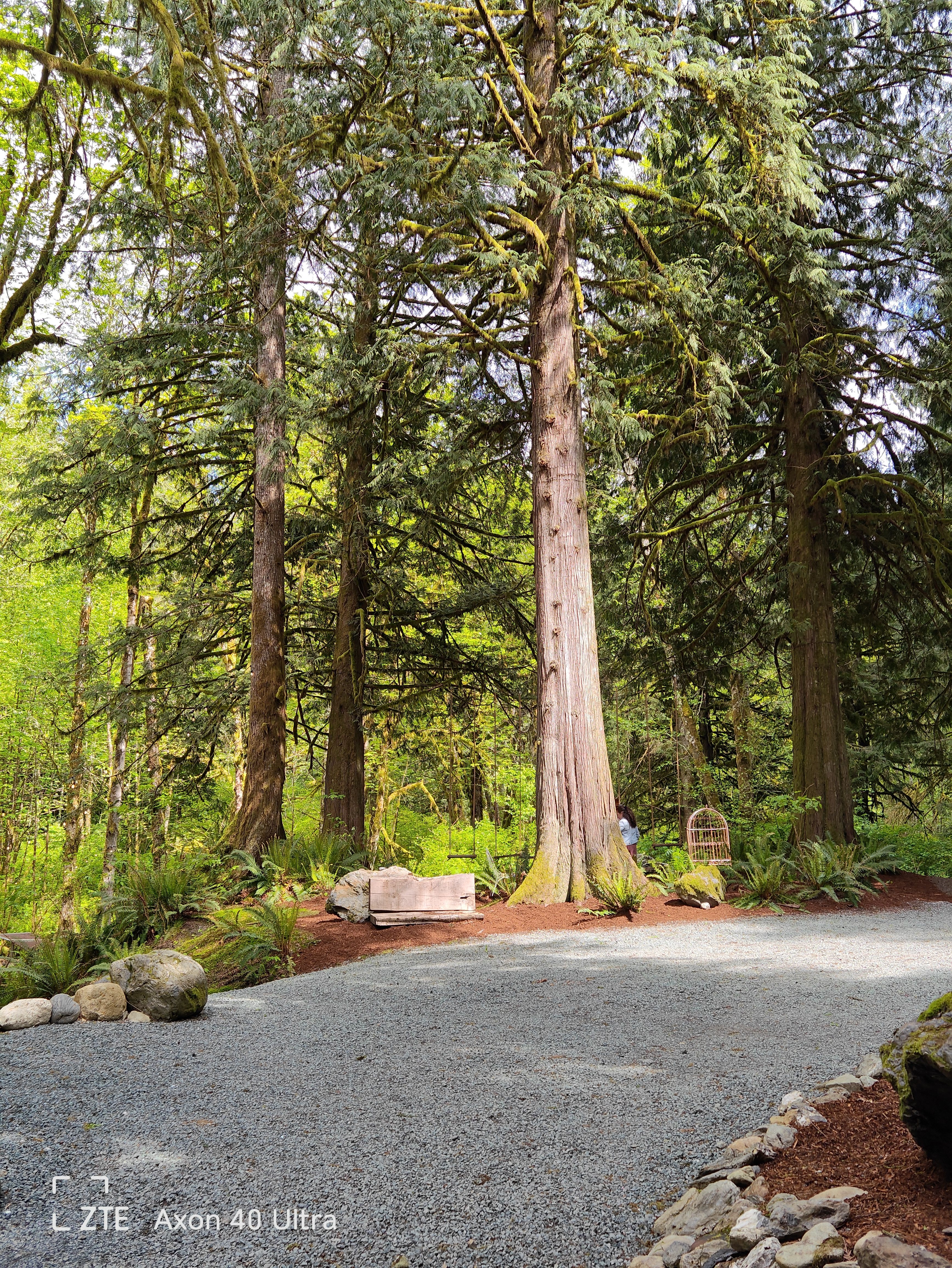
The rear-facing 64MP array isn’t the distinctive camera feature. The under-display selfie camera – which is much more visible than you’d like on a display this grand – does not produce pictures fit for Instagram (like, come on, I look even more like a ghost than usual). The pixels over the camera turn off when you take a picture, but even after cleaning the display, the photos come out blurred and washed out. It’s a shame that the disconnect between the front-facing and rear-facing cameras is so substantial, but the smartphone industry has shown us that it’s hard to get a high-quality camera underneath a display, even in an $1800 phone.
Should you buy it?
The ZTE Axon 40 Ultra is definitely worth considering. It feels great, looks great, and takes great pictures (as long as they aren’t selfies or mega-zooms). The big battery and fast charging are exactly what you’d expect out of an $799 smartphone, and the big 120Hz display rate make for a truly enjoyable OLED experience, no matter what you’re scrolling through. There are a few potential deal-breakers, though, like the MyOS UI, which does away with some of the more intuitive aspects of Android, and the mediocre speaker quality, which shouldn’t be too much of a problem if you’ve got a good pair of headphones. ZTE even includes some with the phone.
Yes, there are certainly better, more expensive devices out there, but ZTE has put an “Ultra” smartphone experience at a more reasonable price point. However, it’s priced the same as the Pixel 6 Pro, and that phone has guaranteed update support for five years, with which ZTE cannot compete. And the Pixel’s screen, while not as fast or bright, is still very good. The Axon 40 Ultra could still be a good alternative if you don’t like Pixels or want to avoid spending $300 more on Samsung’s top-of-the-line devices.
You should buy it if…
- You want a balanced, configurable camera setup
- You love a big, unmarred display experience
You shouldn’t buy it if…
- You need to take high-quality selfies and don't mind a hole-punch display
- You’re used to the standard Android operating system
FAQ
Q: How does the ZTE Axon 40 compare to the Samsung S22 Ultra?
These two phones offer the most obvious comparison when it comes to other high-end phones. They both offer impressive display specs and notably robust camera arrays. However, the ZTE Axon 40 offers faster charging, waterfall display, and a lower price, which could definitely sway some away from the world’s most popular smartphone brand. Still, the S22 Ultra comes with a stylus and offers a more comprehensive operating system, as well as a selfie camera that doesn’t look terrible, so we have to give the edge to Samsung, but it’s closer than you’d think.
Q: How does the ZTE Axon 40 compare to the Pixel 6 Pro?
They may look different on the outside, but the Pixel 6 Pro and the Axon 40 Ultra have a lot in common. Similar feature sets, under-display fingerprint scanner, 5,000 mAh battery, and identical price tags could make it hard to decide. The waterfall display really does give the Axon 40 Ultra that additional cool factor though, and the fast charging is always a perk. Still, the Pixel 6 Pro is a dream to operate thanks to the flawless integration with Android, and the selfie camera isn't under the display, which makes for better selfies. Google's other cameras might look less impressive on paper, but the Pixel can take better snapshots most of the time.

